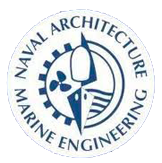Conclusions
Summary
The project to create the concept design of TETHYS was far ranging, hugely challenging and had the potential to become overly complicated. As such, constant efforts we made to reduce the scope and focus the groups effort on certain aspects that were interesting, achievable and most of all, would answer some of the major questions being asked about renewable energy. Namely – Can it be more cost competitive? Is wave energy feasible? Can renewable energy technologies be combined? What are the barriers to moving further offshore and into deeper water?
The TETHYS concept, by combining wind and wave in a balanced way can provide a more predictable, and less variable electricity output to the grid. It has been shown that the Levelised Cost of Electricity (LCOE) can match, or in some scenarios improve upon that of the current industry benchmark – the mothership concept. Indeed, the wave energy collectors are not only technically feasible but, in fact improve profitability.
There are, however, some provisos. First, the economics are heavily affected by the total cost of the platform, which in the scenario presented was over £300 million, and by the performance of the wave energy collectors. In future, there is significant scope for cost optimisation – minimisation of extraneous platform material, varying the number and rating of wind turbines on the platform, and finding the optimum wind to wave ratio.
Innovation
During the project, an important question arose – could the multi-use platform not only provide a stabilised, long life base for the operations and maintenance crew and facilities, electrical substation and research centre, but also act as a base for installation? Could the wind turbine components be shipped directly to the platform where an on-board crane could assemble the floater, tower and nacelle before being towed a short distance to site by tugs and anchor handing vessels? Could the wind turbines be towed back to the calm side of the platform later in their life, when major maintenance or overhaul was required? This was found to be both feasible and with the potential for significant cost savings compared to the current methods, using heavy lifting vessel, or towing back to the shore.
As the platform was shown to be profitable with a relatively small wind farm of 16x6 MW wind turbines, there is the potential to start small and expand later – once the concept has been proven in action. In addition, other wind farm developers could use the platform as a central hub, providing their required installation, O&M and electrical connection facilities.
Future Work
With any project as ambitious as this, the limitations on time and resources mean many questions are left unanswered. One such question was – would the wind to wave ratio of 80:20 be optimal for the chosen site? This is a question the team were very keen to answer, but the lack of data made this impossible. Another was – Could the platform survive? Structural analysis was beyond the scope of this project, but similar designs have survived many years in ocean conditions. This is an area where there is scope for significant future study.
Other areas where further theoretical and practical studies could refine the results would be:
Further Hydrodynamic Analysis of the PSP Concept
In conclusion, the TETHYS concept shows considerable potential to break down the barriers to going further offshore and into deeper waves, by combining the power of wind & waves to reduce costs and improve profitability; however, there remains much work to be done before the concept could be claimed to be investment ready.

